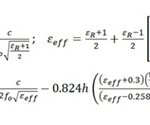What is the advantage of low latency?
Low latency is a critical factor in various technologies and applications, particularly in the realm of communication and computing. It refers to the minimal delay or lag in the transmission of data from the sender to the receiver. Low latency offers several significant advantages, and in this detailed explanation, we will explore these advantages across different domains:
Real-Time Communication:
Low latency is crucial for real-time communication applications such as voice and video calls, online gaming, and live streaming. In these scenarios, any noticeable delay in transmitting data can lead to a poor user experience. Low latency ensures that participants in these activities can interact seamlessly and without noticeable delays, creating a more immersive and responsive experience.
Gaming:
In online gaming, low latency is often referred to as “ping” or “lag.” It directly impacts a player’s ability to respond quickly to in-game events. Gamers require low latency to ensure that their actions are reflected in the game world almost instantly. High latency can result in frustrating delays and reduced competitiveness.
Financial Transactions:
Low latency is critical in the financial sector, especially in high-frequency trading (HFT) and electronic trading systems. In these environments, even milliseconds of delay can have significant financial consequences. Traders rely on low-latency networks to execute buy and sell orders rapidly and take advantage of market fluctuations.
Video Conferencing and Telemedicine:
In video conferencing and telemedicine applications, low latency is essential for maintaining natural and productive conversations. High latency can cause participants to talk over each other, leading to confusion and reduced communication effectiveness. In telemedicine, low latency ensures that medical professionals can provide timely advice and diagnoses to remote patients.
Virtual Reality (VR) and Augmented Reality (AR):
VR and AR applications require low latency to provide users with a realistic and immersive experience. Any delay in tracking movements or rendering virtual objects can lead to motion sickness and a disconnect between the virtual and real worlds. Low latency is crucial for creating a seamless and comfortable VR/AR experience.
Cloud Computing and Remote Desktop:
Businesses and individuals rely on cloud computing and remote desktop services for access to powerful computing resources and software applications. Low latency is essential in these scenarios to ensure that users can interact with remote systems and data as if they were locally installed. High latency can result in sluggish responses and reduced productivity.
Internet of Things (IoT):
In IoT applications, low latency is critical for real-time monitoring and control of devices and sensors. For example, in autonomous vehicles, low-latency communication is essential for quick decision-making and response to changing road conditions and traffic.
Online Shopping and E-commerce:
Low latency can significantly improve the user experience in online shopping. Quick response times when navigating e-commerce websites and processing transactions lead to higher customer satisfaction and potentially increased sales. Slow loading times and delays can discourage customers and lead to cart abandonment.
Content Delivery and Streaming:
Low latency is important for content delivery networks (CDNs) and streaming services. It ensures that video and audio content can be delivered without buffering or interruptions, providing a smooth and uninterrupted viewing experience for users.
Industrial Automation and Robotics:
In industrial automation and robotics, low latency is crucial for precise control and monitoring of machines and robots. It allows for real-time adjustments and ensures the safety of operations, especially in collaborative robot (cobots) environments.
In summary, the advantages of low latency are numerous and span various domains. It enables real-time communication, enhances user experiences in gaming and multimedia, supports critical applications in finance and healthcare, and facilitates efficient remote computing and control. Low latency is a fundamental requirement for many emerging technologies and applications, enabling them to function effectively and deliver the level of responsiveness users expect.


